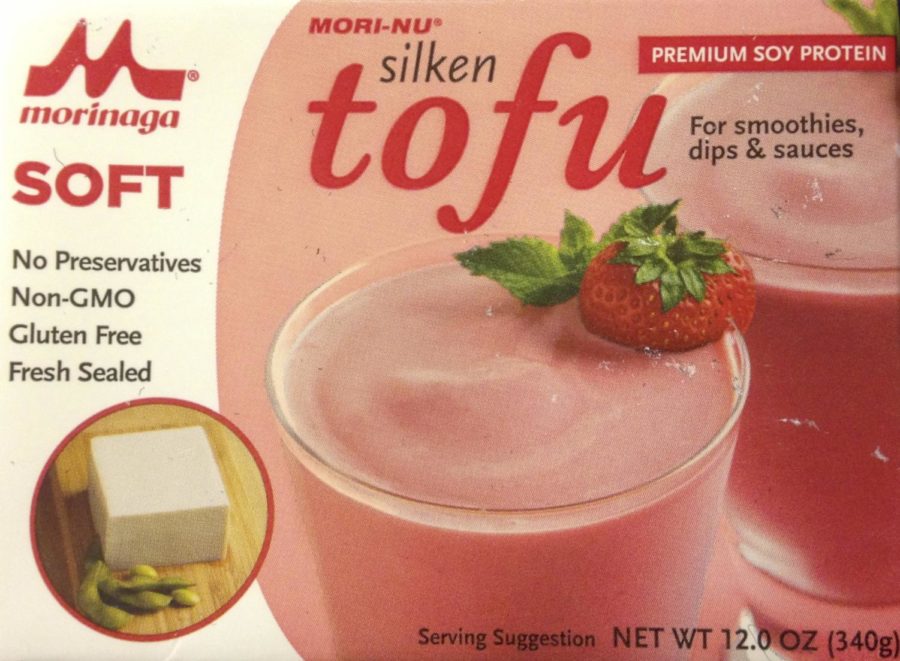Guide to soy foods
Box of soft silken tofu.
February 19, 2014
We have a full guide for you on what products are available and how you can incorporate them into your diet.
Soft Silken Tofu
This product comes packaged in a small rectangular cardboard box. This is not the same product as soft water-packed tofu. It is perfect for using in smoothies, dips and desserts because of its light, fluffy and cream-like qualities. When combined with Greek yogurt, it can take the place of cream cheese or mayonnaise in recipes.
Extra Firm Tofu
This type of tofu is water packed and ideal for entrees. In order to achieve the firmest and most desirable texture, it is vital to press the tofu. This process removes excess water and prepares the tofu to absorb flavors.
To do this: Begin by draining the water from the package followed by slicing the tofu into desired pieces. Arrange tofu pieces on a paper towel-lined plate or pan. Place a layer of paper towels on top of the tofu pieces, then place a flat, heavy object on top. We used glass baking dishes and skillets. Press for at least a half hour, replacing paper towels after 15 minutes or as needed. The tofu is now ready to be marinated, rubbed or seasoned. This process results in an overall better piece of tofu.
Soy milk
Soy milk has a very nutty flavor with a mild, natural sweetness. Soy milk has fewer calories, grams of sugar and cholesterol while containing more calcium and Vitamin D in comparison to skim dairy milk. Soy milk can easily be used in place of dairy milk.
Edamame
Edamame are immature soybeans. They can be found frozen in the pod or shelled. It is important to read the package for information regarding cooking method and time. Some can be found ready to eat while others require boiling or steaming before consuming.
Black Soybeans
Black soybeans are very similar to black beans and can be found in cans. Black soybeans have a slightly firmer texture than black beans but can be used in-place of or alongside many kinds of beans,
TVP (Textured Vegetable Protein)
TVP can also be referred to as TSP (Textured Soy Protein). TVP can be found next to other grain products typically located in the health or organic sections of your supermarket.
A great way to use this product is by hydrating the dried flakes with boiling water. The hydrated protein can be seasoned and used in-place of ground meats.











